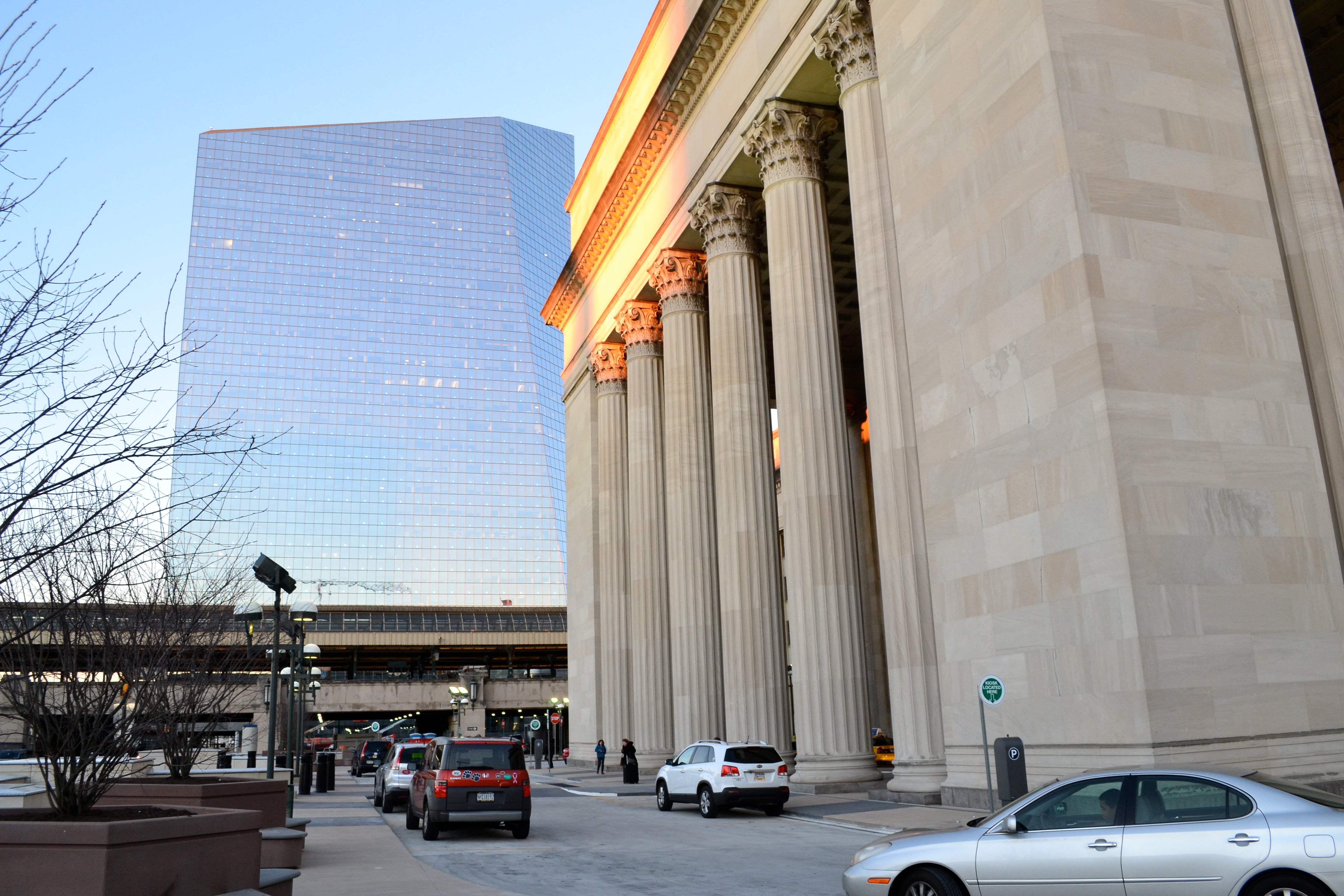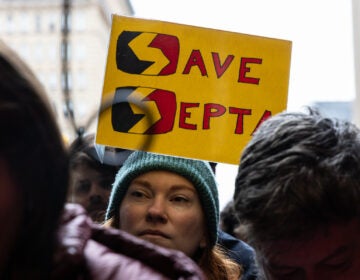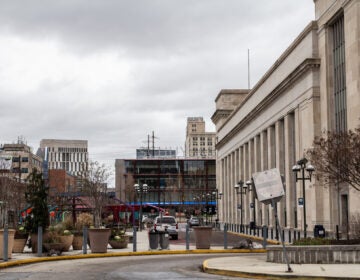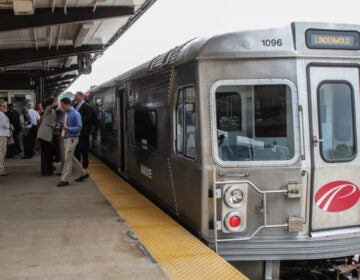Drexel’s Fry: Fix Northeast Corridor Transit or say goodbye to jobs

Drexel University’s founder and namesake, Anthony J. Drexel, made his fortune financing the construction of America’s railroads. Without them, the school probably wouldn’t exist.
Drexel’s still betting big on the railroad, developing a 14-acre, $3.5 billion “innovation district” right next to 30th Street Station. Drexel President John Fry tried to shore up that wager, testifying in favor of rail infrastructure funding at a Congressional hearing in Washington D.C. on Wednesday morning.
“We know what needs to be fixed, we know how to fix it, and we know how much it’ll cost to fix it,” said Fry, whose testimony before the House appropriations committee’s subcommittee on transportation and housing struck a mostly foreboding tone while focusing on Amtrak’s Northeast Corridor.
The Northeast Corridor is Amtrak’s busiest line, carrying more than 820,000 passengers a day. According to a nonpartisan federal commission, that translates into $100 million in daily economic impact attributable to the line, which Fry said requires $50 billion in repairs and upgrades. Failing to make those investments, Fry warned, would devastate business from Washington to Boston, an area that accounts for around 30 percent of all U.S. jobs.
“These metrics are staggering,” said Fry. “What I’m about to say is, therefore, so alarming: that the Northeast Corridor is simply crumbling, and in its current state, it is actually an economic crisis waiting to happen.”
The hearing was called to help guide the subcommittee’s decisions on how to direct funds appropriated in the massive $1.3 trillion omnibus spending bill passed last month, said Rep. Mario Diaz-Balart (R.- Fl.), the chairman of the committee. The bill included large increases to federal grant programs for transportation infrastructure.
Fry, who’s also chairman of the Chamber of Commerce of Greater Philadelphia, tempered his ominous opening remarks with slightly more upbeat responses to the committee’s members while maintaining 30th Street Station’s place as the keystone of the region’s economy.
“The greatest asset that we have in Philadelphia is our location in the transportation infrastructure,” said Fry. “That’s what we sell as our competitive advantage.”
Fry pointed to Schuylkill Yards, the multi-billion dollar development Drexel is pursuing with Brandywine Realty Trust, as an example of the kind of private investment that’s inspired by public infrastructure investment. The developers broke ground on the ambitious plan’s first project last fall, a 1.3-acre community park next to 30th Street Station, and Fry told the subcommittee that at least three more projects, totalling around 1.5 million square feet, were either “tenant-ed or about to build.”
“We have a project that is actually underway where someone is going to spend $3.5 billion on making Amtrak’s holdings a lot more valuable than they are right now,” said Fry. “So, it makes sense for us to proceed into the implementation of this 30th Street District Plan.”
Fry also revealed during his testimony that Schuylkill Yards was considered the “leading one” of the city’s three potential sites for Amazon’s second headquarters.
There’s an implicit counterargument to Fry’s remarks that went unaddressed during the hearing: Even if Amtrak and 30th Street Station suddenly disappeared, the $3.5 billion in private investment would still get invested somewhere. It’s not that the money would evaporate, only that it wouldn’t be concentrated around the rail station.
There is a sort of “build it, and they will come” rule with infrastructure investment: Where you construct highways and rail lines will influence where people and businesses will invest in homes and offices.
And, for politicians, this point has not been lost — under President Donald Trump, the award of federal TIGER grants has shifted away from the cities, towards the rural areas that form the GOP’s base. Under the new spending bill, Congress tripled TIGER funding to $1.5 billion but kept apportionment decisions in administrative hands.
Not all transportation projects have fared as well. The Trump Administration continues to refuse to fund the Northeast Corridor’s Gateway program, which would replace and rehabilitate the century-old rail tunnel under the Hudson River that was damaged by Superstorm Sandy. Amtrak officials have repeatedly warned that the project is needed to keep Amtrak trains running between New York City and New Jersey — and thus from Washington D.C. to Boston — but Trump officials have described it as a local problem unworthy of federal dollars. Fry obliquely addressed the issue as he concluded his opening remarks.
“I’d like to leave you with this thought: It would be a grave mistake to think of the dire problems facing the Northeast Corridor as just a regional challenge or an urban problem,” said Fry. “The economic consequences of continued inaction are a problem for our entire nation.”
Neither Fry nor any of the others testifying, which included Amtrak Executive Vice President Stephen Gardner, tried to articulate why the Northeast Corridor, rather than some less-developed part of the country, should receive these investments from the federal government.
Land-use economists would note, though, that transportation infrastructure dollars are more efficiently deployed in dense, urban environments. Not only will infrastructure improvements simply get used more in densely populated areas than sparsely populated areas, but there will be multipliers on those investments, thanks to agglomeration effects. By concentrating firms, workers and potential customers in a tight area, the potential for new economic activity grows — the search costs for finding new employees is reduced; businesses can hold less inventory if they’re next door to their suppliers; the chances of serendipitous meetings that inspire new economic activity increase. It’s a virtuous cycle that can feed into itself, continually attracting more jobs and more residents until a city runs out of space for all them, driving up housing costs, office rents and commuting times — problems that Philadelphia does not suffer from, at least for now.
WHYY is your source for fact-based, in-depth journalism and information. As a nonprofit organization, we rely on financial support from readers like you. Please give today.






